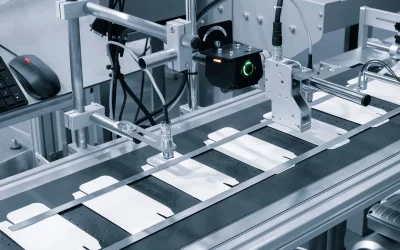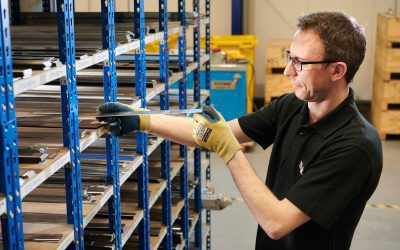Businesses operating in the meat and poultry sector are witnessing an increased demand for specialist equipment and this is being fuelled by a number of factors.
Firstly, consumers are requesting a more diverse range of packaged meat products. Secondly, there is a greater awareness of the nutritional content associated with these foods and thirdly, more investment is being placed into research and development to enhance the nutritional content, creating healthier options for consumers. All of these things broaden the range of products that are available, placing increased pressure on producers.
The Use of Meat Processing Equipment
Meat Processing Equipment is a specialist type of machinery with advanced functionality allowing operators to process meat at scale without compromising on the quality standards that consumers expect from processed meat products. This type of equipment is becoming increasingly popular for several reasons. Not only does it provide more streamlined operations, it improves hygiene and quality standards too. Where emphasis is placed on health, hygiene and cleanliness, businesses are being encouraged to invest in this type of equipment.
The growth of the food processing industry on a global scale, combined with greater investment in automated machinery has driven the trend in meat processing equipment. In addition, research and development continues to evolve which not only improves processing techniques but also builds on new technologies used to boost productivity and allow businesses to grow much quicker. Stringent regulations placed on businesses in terms of packaging, processing and health and safety including hygiene regulations has also encouraged businesses to use new machinery to streamline production processes.
Meat Processing Equipment
Specialist equipment used for meat slicing is estimated to make up a significant proportion of the market. This type of equipment can be combined or integrated with other machinery to save time in productivity and activities such as weighing out products before processing.
Dicing equipment is also expected to experience a period of growth due to the consistency and speed it offers food producers. The growing trend for barbeque restaurants particularly in emerging economies is driving the growth in dicing equipment to create uniform cuts.
The use of blended meat processing equipment is also expected to rise due to the increasing demand for blended meat products such as burgers.
All of these trends have been documented in various studies into the way in which the meat and poultry processing equipment industry is growing. The two most notable studies include a study by Global Market Insights and another by Technavio.
Global Market Insights
According to the study by Global Market Insights, the industry for meat and poultry processing equipment will, by 2027 exceed £6.4 billion based on beef equipment alone. This increase is being driven by economic growth in developing countries which is, in turn, creating demand for beef products. The report also identifies other important findings on this industry:
The demand for chicken products is also on the rise due to a surge in younger people looking for products that are convenient and ready to eat. The market for chicken is set to achieve more than 7% CAGR throughout 2027.
More and more hotels and restaurants are requesting these products to serve to customers. As these types of businesses buy products in bulk, meat and poultry producers must switch to equipment that can mass produce processed food items quickly and efficiently.
Tender meats and better-tasting products mean that processing equipment must adapt to incorporate methods such as marinating and tumbling. Equipment in this area surpassed £1.6 billion in 2020.
The growth in dried, processed meat is also showing an upward trend and is likely to exceed £1.5 billion by 2027. This is largely due to the high protein content within these products and the increased shelf life that they offer, providing greater choice and convenience for consumers.
Technavio Industry Insights
A market research report exploring the current market trends in processing equipment for the meat and poultry industry between 2020 and 2024 was conducted by Technavio. Their report suggests, as does the Market Insights data that the growth in demand for meat and poultry products is in part, due to its nutrient content. Many meat and poultry products bring a range of benefits including vitamins and minerals, protein content as well as omega 3 fatty acids all of which contribute to a healthy, balanced diet.
If businesses are to survive and indeed thrive in the meat and poultry processing space they must implement new and creative ways to process these meats and particularly use the latest processing equipment. This statement is further strengthened by statistical data from Technavio’s market research:
Processing equipment for meat and poultry products is estimated to achieve a year over year growth rate of 2.47%, with equipment dominating the market throughout 2019.
The meat industry is a sector that is continuing to grow and while the market has shown little signs of movement in North America and Western Europe, it is expanding rapidly in regions such as MEA and APAC. This is largely due to an increase in consumption of meat products including processed items.
Most of the growth in demand will occur in the APAC region, which will retain more than 46% of overall industry growth.
There are also other contributory factors that govern rising demand including economic growth and changing consumer buying habits. There is a strong trend that shows a distinct move towards ready to eat meat and poultry products. This requires businesses in the sector to invest in their equipment and have the right resources to process the products at scale. China is one of the main markets for poultry and meat processing equipment and growth in this area is estimated to be much faster than any other region.
In the years to come, the demand for processing equipment in relation to meat and poultry products is only set to increase. As the global marketplace for these types of products continues to expand, businesses must respond to these trends and incorporate this equipment into their operations so they can cope with changing consumer requirements.


 +44 (0) 1909 519815
+44 (0) 1909 519815 


